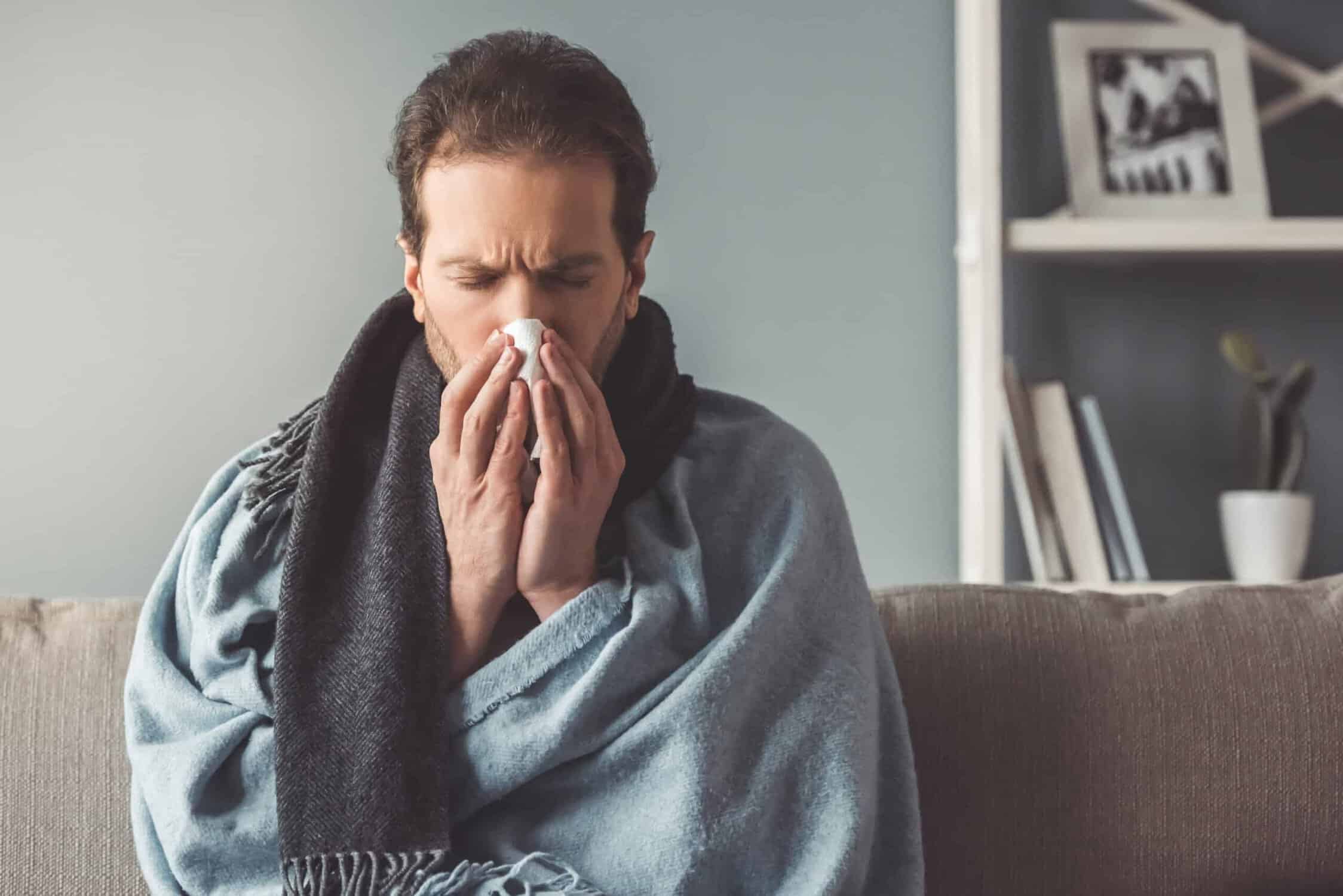If you’ve ever gone for a run, you’ve possibly experienced the euphoric feeling commonly known as “runner’s high.” This natural high is a rush of endorphins that can make you feel like you’re flying on the wings of a unicorn.
What’s even better is that runner’s high offers a range of benefits including improved mental health, better cardiovascular health, and increased stamina.
It’s a sensation spoken about and felt among all types of endurance athletes, but became particularly popular among distance runners.
But what actually is runner’s high?
How far do you need to run in order to start feeling it?
Will it make running a half marathon or full marathon less painful?
Whether you’re a seasoned runner or a newbie, getting a runner’s high can make your workout feel more rewarding and is worth understanding how it all really works.

What is Runner’s High?
So , technically what is a runner’s high?
Runner’s high is a feeling of euphoria that’s attributed primarily to the release of endorphins in the brain.
What are endorphins?
Endorphins are neurotransmitters produced naturally by the body and act as painkillers and mood elevators.
Simply, when we engage in any form of physical activity, our bodies activate endorphins. Endorphins generate a feeling of well-being and euphoria.
Good news – you don’t have to be a seasoned runner to experience runner’s high and, you can get the same sensation from biking and swimming.
Runner’s high is often accompanied by feelings of euphoria and well-being. It’s no wonder that runners talk about chasing that feeling.
Many report feeling more motivated to run and get across that finish line not just because of the physical benefits, but because of the emotional state it produces.
There’s also evidence to suggest that other factors like temperature, mood, and intensity of the exercise can impact whether or not someone experiences runner’s high. There have been some studies that running in warm weather may stimulate this sensation
The Science Behind Runner’s High
Is runner’s high real? The science says so.
Recent studies suggest that runner’s high is due to an increase in endogenous endorphin levels in the brain. Endogenous meaning they’re produced from within your brain as opposed to taken from an external source.
Endorphins are chemicals that are released in the brain during exercise and other activities, like eating chocolate any listening to music, that are designed to increase feelings of pleasure.
When your body is releasing endorphins, it’s simultaneously decreasing your ability to feel pain.
The theory is that when you run, your body undergoes stress, which triggers the release of endorphins. These chemicals bind to the receptors in the brain, producing a feeling of euphoria. The longer and more intense the workout, the greater the release of endorphins, and the stronger the sensation of runner’s high.
What Causes Runner’s High?
There have been numerous studies conducted to prove its existence. So what do those studies say?
Since the 1980’s it was a common explanation that runner’s high was caused by endorphins.
However, more recently, scientists believe the explanation for runner’s high is the so-called “exercise-induced anandamide” theory.
Anandamide is a cannabinoid compound that’s similar in structure to THC, the active ingredient in marijuana.
It’s a naturally occurring chemical in your brain known to produce feelings of happiness and euphoria. Some studies suggest that anandamide levels in the brain increase during exercise and may be the cause of the the sensation of runner’s high.
Why did they think it had to do with endorphins?
Endorphins bind to what is known as opioid receptors on neurons. This binding signals to other parts of your body and your brain would otherwise interpret as pain.
But, here’s what they learned instead.
Increase in Endocannabinoids
In a paper titled Wired to Run by David A. Raichlen explores the relationship between exercise and endocannabinoids.
The study found endorphins are too big to pass through the blood-brain barrier. Meaning, they’re not actually interacting with your brain cells.
Instead, scientists have found a significant increases in the levels of endocannabinoids, which are feel-good chemicals that produce feelings of relaxation and happiness, in the brains of distance runners following moderate intensity activity.
These neurochemicals, like tetrahydrocannabinol, are involved in various physiological processes, including appetite, pain sensitivity, mood, and memory.
When we run for a prolonged period, the body triggers the release of endocannabinoids, which then interact with our endocannabinoid system and produce mood-enhancing effects.
Increase in Dopamine
Running long distances has also been linked to the release of dopamine, a neurotransmitter that plays a vital role in the brain’s reward and pleasure centers.
Several studies have found that running can lead to an increase in dopamine production, which may contribute to the feelings of euphoria and happiness during a run.
THC found in cannabis activates the same receptors in the brain as endocannabinoids, resulting in a similar high. However, unlike THC, the brain naturally produces endocannabinoids during running, making it a safer and always-legal way to get high.

Symptoms of Runner’s High
Running is a sport that offers countless health benefits – perhaps more so than any other kind of aerobic exercise.
If you’ve ever experienced that “high feel” from running, then you’re probably already aware of some of the symptoms of runner’s high.
If you haven’t, here’s what to expect – and know, first and foremost, that there are both good and bad symptoms associated with this phenomenon.
Symptom #1: Euphoria
The most common symptom of runner’s high is a feeling of euphoria, or a “natural high.”
This may feel like mind being clear and your body feeling lighter.
This feeling can last for several minutes or hours, depending on the intensity of your workout.
Symptom #2: Decreased Anxiety and Stress
Another symptom of runner’s high is the decreased feelings of anxiety or stress.
This feeling is due to the release of endorphins which increase blood flow and stimulate the brain’s reward system, creating a sense of wellbeing and contentment.
Symptom #3: Pain Masking
While running, your body may experience discomfort and pain in the muscles and joints.
Runner’s high can mask or make the pain feel less severe.
In many cases, it has pain-relieving benefits that allow you to relieve pain completely unrelated to your running, too.
Symptom #4: Reduced Appetite
Runner’s high can also affect your appetite.
After a workout, some runners report experiencing a reduced appetite. This is due to the release of hormones that suppress appetite.
After a run, remember to fuel your body with the necessary nutrients to help it recover and rebuild after a workout even if your appetite has been surpressed.
Symptom #5: Exhaustion
While runner’s high can make you feel invincible, it can also lead to exhaustion. An intense workout can drain your energy, and you may experience fatigue even when the high wears off.
It’s important to listen to your body and give it the rest it needs to recover.

How to Achieve Runner’s High
So how do you get a runner’s high?
If you’re curious about how to achieve runner’s high, check out these tips:
Start Slow
The first and most crucial step in achieving runner’s high is to pace yourself.
A runner’s high usually sets on with a longer distance run. Start with slow and steady runs, allowing your body to build endurance and strength gradually. This will help you avoid injury and burnout in the long run.
Find Your Rhythm
Not everyone is the same. Finding your running rhythm is key to achieving a runner’s high. This could be anything from listening to your favorite music, setting a breathing pattern, choosing your favorite route, or running with a friend.
Anything that helps you relax and allows your mind to focus on the task at hand.
Mix Up Your Training
Running the same route or distance every day can become monotonous and uninspiring, leading to boredom and lack of motivation.
Make sure you mix up your training regularly, adding hills, intervals and even some cross-training, which will challenge your body and push it to the limits. This will increase your overall fitness level and help you to achieve runner’s high much easier.
Stay Mentally Focused
The key to achieving runner’s high is to stay focused mentally, even when it gets tough. This means pushing through moments of physical pain or mental distraction, and focusing on the present moment instead.
Try to keep your mind focused on the sensation of your feet hitting the ground, your arms swinging, or your breathing. This will help you tune out any distractions, and allow your mind and body to enter into a state of flow, leading to that ultimate runner’s high.
Celebrate Your Achievements
Finally, don’t forget to celebrate your achievements, no matter how small they may seem.
Recognizing the milestones you’ve achieved, such as distance or pace records, is vital to maintaining motivation and choosing to get up and run even on days when you don’t feel like it.
Risks and Precautions of Runner’s High to Keep in Mind
Is runner’s high bad for you? In general, no, but there are some risk.
While it may feel great in the moment, there are some risks and precautions you should keep in mind to ensure that you stay safe and healthy while running.
Runner’s high can be a great motivator, it is important to remember that overtraining can be dangerous. Pushing yourself too hard can lead to injuries, such as shin splints, plantar fasciitis, or stress fractures.
Some common signs of overtraining include chronic fatigue, difficulty sleeping, irritability, muscle soreness, or decreased performance. If you notice any of these symptoms, it may be time to take a break and give your body time to recover.
While the release of endorphins can be beneficial for reducing stress and anxiety, it can also mask pain and lead to overexertion, which can be dangerous.
It’s important to pay attention to your body and not rely solely on the feel-good effects of runner’s high to push through pain or fatigue. Ignoring warning signs like muscle soreness, dehydration, or dizziness can lead to serious injuries that could sideline you from running for weeks or even months.
Another risk of runner’s high is that it can be addictive. The rush of endorphins can create a sense of euphoria that can be hard to replicate with other activities. This can lead to a dependence on running as a way to boost your mood, which can ultimately lead to burnout, both physically and mentally.
Be sure to mix up your workouts and find other activities that bring you joy, so you don’t become too reliant on running to maintain your happiness.
Other Mental Benefits of Running
Beyond simply being an effective stress-reliever, running has been found to have several unique positive impacts on the mind, ranging from improved mood to enhanced creativity. And you don’t have to spike your heart rate or get that infamous runner’s high in order to benefit. Here are some of the other mental benefits of running:
- Increased Self-Esteem: Regular exercise has been shown to increase feelings of self-worth and body confidence, which in turn translates to greater overall happiness and well-being.
- Improved Sleep Quality: It’s no secret that getting enough sleep is essential for maintaining good mental health. Running in particular has been found to be especially effective at promoting restful sleep, likely due in part to the physical exhaustion it can induce.
- Enhanced Cognitive Functioning: Cardio exercise like running can lead to improved memory, increased attention spans, and greater overall cognitive flexibility. In addition, the release of endorphins during and after running has been found to boost creativity levels, expanding the mind in new and unexpected ways.
- Reduced Symptoms of Depression: Depression can be a debilitating condition that affects every aspect of a person’s life. Fortunately, running has been found to be a powerful tool in the fight against depression. This is likely due to the fact that running stimulates the brain to produce more mood-boosting neurotransmitters like dopamine and serotonin.
- Increased Resilience: Running, particularly trail running, has been shown to build tremendous resilience in those who engage in the activity regularly. Many runners report feeling more mentally tough and better equipped to handle life’s challenges after hitting the pavement.
Final Thoughts
The runner’s high is that coveted peak of running intensity that many runners seek, but not everyone can achieve.
However, with these tips and tricks, you can set yourself up for success, tolerate discomfort, and ultimately find that unique and energizing euphoria that only comes from running.
So what do you do if you’re craving that experience? It’s simple – get out there and give it a whirl! Head out for a mile, two miles, or however far your fitness levels will let you go. You’ll be amazed at how wonderful it feels – and how much fun you end up having!





